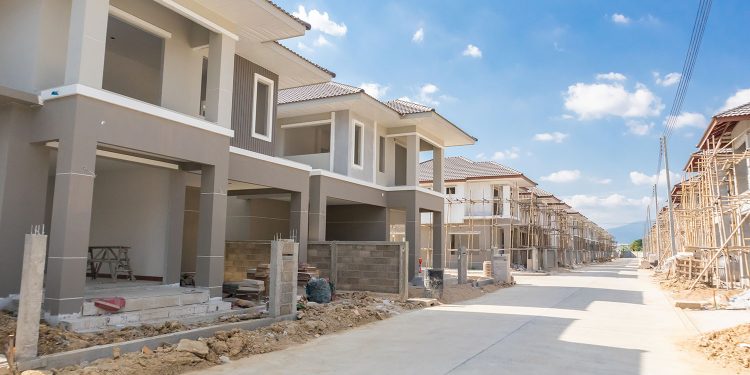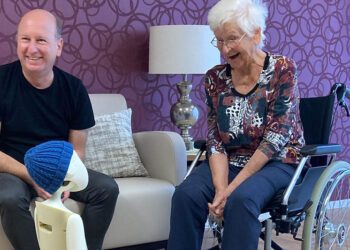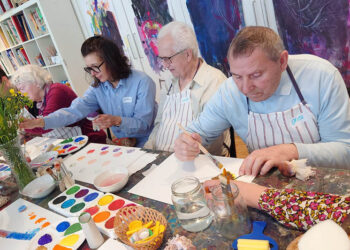When the warm temperatures herald the start of summer again, it’s also the time of year when people are looking for a new home or renovating their old one. Anyone buying an apartment or house now – or planning to renovate – has the chance to think about tomorrow today. Because even if we still feel fit today: Our needs change over the years. What used to be practical or attractive can quickly become a burden in old age.
Those who plan early live independently and safely for longer – and above all with a better quality of life. Particularly important: People with rollators or incipient mobility restrictions are the largest target group in old age. For them, a wheelchair-accessible home is often the key to freedom.
1. Steps and thresholds: Small edges, big effect
In conversations with architects, I have often heard that steps are seen as a design element. Well, they become a challenge in old age. For steps and stairs, consider whether they can be retrofitted with a stair lift or stair climbers or, in outdoor areas, with a ramp.
Even a low doorstep can be a tripping hazard – especially with a rollator or in the dark. Ideally, there should be no steps between rooms or at the entrance to the home. If this is not possible, ramps or flat transitions can help.
Tip: If you renovate today, think threshold-free – this not only helps in old age, but also makes life easier with a baby carriage or shopping bag.
2. Light is becoming increasingly important – for safety, orientation and well-being
Vision changes with increasing age: The eyes need more brightness, react more sensitively to glare and contrasts become more difficult to see. This is why good lighting is not a minor matter, but a central element of age-appropriate living quality.
Uniform lighting without strong shadows is particularly important. In corridors, on stairs and in the bathroom, the light should come on immediately and reliably – ideally via motion detectors or timers. Night lights help people to find their way around safely when going to the toilet at night without feeling completely awake. This also reduces the likelihood of falls.
But light is not only functional. It also influences our well-being, mood and sleep. Natural daylight, supplemented by warm white artificial light, creates a pleasant living atmosphere and helps the body to maintain its natural rhythm.
Good lighting is often the simplest and at the same time most effective measure for greater safety and quality of life.
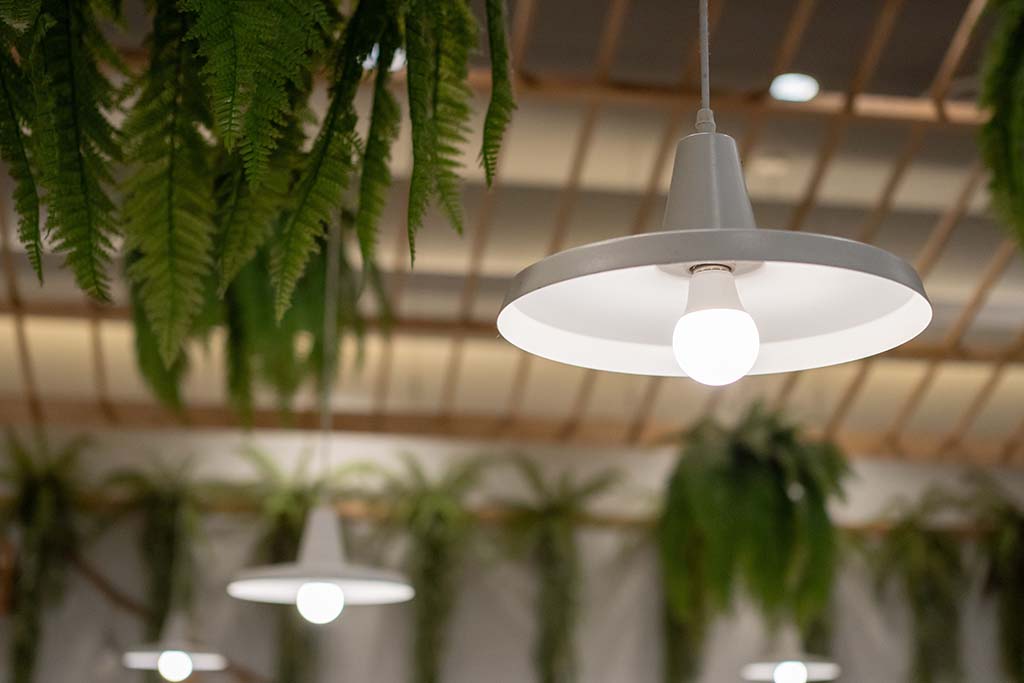
3. The bathroom: The underestimated risk area
Few rooms are as risky as the bathroom in old age: damp, slippery tiles and narrow movement zones make it a real tripping hazard. A lot can be achieved with just a few adjustments.
An age-appropriate bathroom should have a level shower with a non-slip floor – ideally with enough space to put a shower stool or even a rollator in. Grab rails in the right places (next to the toilet, in the shower, at the washbasin) provide safety when getting up or during brief bouts of dizziness.
The washbasin should also be easily accessible – preferably usable while seated, with free access for a wheelchair or rollator. Mirrors should be positioned so that they are easy to see even when seated.
The toilet is also particularly important: There needs to be more space to the side so that you can reach it with a rollator or an assistant if necessary.
Anyone planning or renovating a new bathroom should generally ensure that there is sufficient space to move around – around 120 × 120 cm is the recommended minimum in front of the toilet and washbasin.
Tip: Even small changes such as a non-slip mat, a raised toilet or a grab rail for retrofitting can make a big difference – especially if you install them before something happens.
A safe bathroom not only provides comfort – but also the good feeling of not being dependent on help in an emergency. Those who can move around freely in it remain independent for longer.
4. Order is safety: Avoid tripping hazards
What looks harmless can quickly become dangerous in everyday life. Loose carpets, long curtains, open cables, wobbly furniture or objects on the floor are among the most common tripping hazards in older people’s homes. Even a small snag on the carpet can be enough – and the rollator gets stuck, the foot is placed unsteadily, resulting in a fall.
Particularly in narrow areas such as hallways, between the sofa and coffee table or in the bedroom, you should take a close look: Is there enough room to move? Is there anything in the way that is unnecessary?
Clear, unobstructed paths through the home not only ensure greater safety, but also provide a clear overview – this is particularly important in old age when vision or reaction speed deteriorate.
Non-slip floor coverings are also recommended – especially in the kitchen, bathroom and entrance area. Carpets should either be firmly glued down or removed completely. Cables belong either on the wall or in cable ducts – this also looks tidier.
5. Sufficient space – especially with a rollator
What many people underestimate: Although a rollator is a practical everyday companion, it significantly changes the amount of space required in the entire living area. If you want to move around your home safely and comfortably with a rollator, you need one thing above all: enough space to get around obstacles, turn and move around safely.
Ideally, doors should be at least 80 cm wide – 85 to 100 cm is more comfortable, especially in the bathroom, kitchen and bedroom. Narrow spaces, such as narrow door frames or narrow corridors, can quickly become an obstacle – and not only make it difficult to move forward, but also to turn and turn around.
Turning areas are also important: in central areas such as in front of the washbasin, in the kitchen, in front of the closet or in the entrance area, there should be enough space to be able to turn around or maneuver sideways with the rollator without any problems. As a rule of thumb: a free area of at least 120 × 120 cm makes it possible to move around without constriction.
In the kitchen in particular, it is crucial that you can reach work surfaces, the stove and the sink with the rollator without having to contort yourself or push furniture aside. The same applies to the bathroom – here, freedom of movement determines whether everyday activities such as washing or using the toilet can be carried out independently.
Too little space is also often planned for in the bedroom: There should be at least 90 cm between the bed and the wall so that the rollator can be positioned comfortably next to the bed and you can get in and out safely.
Tip: When redecorating or arranging furniture, consciously pay attention to movement zones – especially at transitions, in door areas and in front of appliances such as the stove, washing machine or toilet. The more clearly and generously the room is structured, the less stress, detours or risks arise in everyday life.
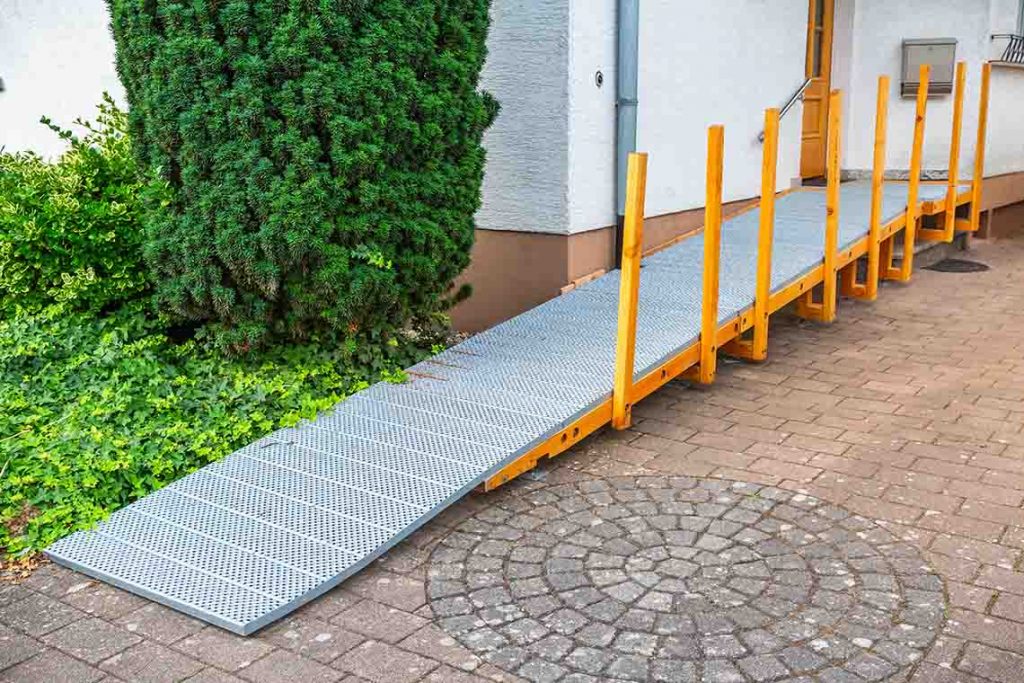
6. Doors and entrances: light & quiet – turning thresholds into opportunities
Doors are one of the most frequently used but often underestimated building elements in an apartment or house. Yet they can become real barriers in old age: A heavy entrance door that can only be opened with great effort, or a door that is too narrow for a rollator to fit through, can make everyday life considerably more difficult – or even dangerous.
People with limited strength, arthritis, walking disabilities or walkers in particular need doors that can be operated easily and intuitively. Traditional swing doors are often impractical because they take up extra space when opened. Sliding doors – whether manual or electric – are an ideal solution here: they take up no space, are noiseless and can also be opened with little force.
Automatic door systems with a soft-stop function also offer convenience and security: they close gently by themselves without slamming shut and can be opened using a button, motion detector or even an app – ideal for entrances to houses or transitions to patios and balconies, for example.
Another detail that becomes crucial with age: The height and shape of the door handles. Instead of classic knobs, it is advisable to use long handles or bow handles that are easy to grip even with limited hand function or impaired fine motor skills. Door handles should be mounted at a height of around 85 to 100cm – so they are easy to reach both when standing and sitting (e.g. in a wheelchair or on a stool).
Tip: Test doors in everyday life: Can I open them with one hand or with a rollator? Do I have enough space to walk through? Do I feel safe when moving from one room to the next?
Well-planned door and access solutions not only make life easier for people with limited mobility – they also create more openness, orientation and comfort for all generations. Because sometimes it’s not the big ramp, but the small door that makes the difference.
7. Everything within easy reach – from the socket to the closet
Mobility decreases with age – bending, stretching and balancing become more difficult and involve risks. This makes it all the more important that everything you need on a daily basis is easily accessible. This starts with switches and sockets: they should be at a height of between 90 and 110 cm – i.e. around hip height – so that they can be operated comfortably when standing, but are also easy to reach when seated.
In the bedroom in particular, we recommend switching the light directly from the bed – either via an easily accessible switch, a wireless remote control or a simple smart home module. If you get up at night, you should be able to find your way safely – preferably using a soft orientation light or an illuminated switch.
Clarity should also be ensured in the closet: Frequently used items of clothing belong in the easily accessible center. Items that are used less frequently can be stored higher or lower – ideally with the help of a light stool with a handle if necessary.
The same applies in the kitchen: Don’t put heavy items in the wall unit, prefer to store pots and bowls in base units with pull-outs or rotating elements. This makes everyday life easier – and safer.
Tip: Take a conscious tour of your rooms – preferably with your eyes open: “Can I still get there easily if I can no longer bend down well?” Small changes often make a big difference.
8. Technology can help – but not overwhelm
Technology is good when it doesn’t attract attention, but simply works. Especially in old age, you don’t need high-tech gadgets, but simple, everyday solutions that are really useful.
Even small smart helpers significantly increase convenience:
- Motion detectors that automatically switch on the light
- Time controls for blinds or heating
- Stove switches that reduce hazards in everyday life
- Emergency call systems that can alert relatives or a service at the touch of a button or by voice.
Ideally, these systems work quietly in the background, without interfering with everyday life, and provide an additional sense of security. Anyone building or renovating today should also consider empty conduits or connection options for future technology – this way you remain flexible, even if life circumstances change.
Tip: Seek advice on which systems suit your everyday life – and only choose what you really need. Technology should relieve you, not confuse you.
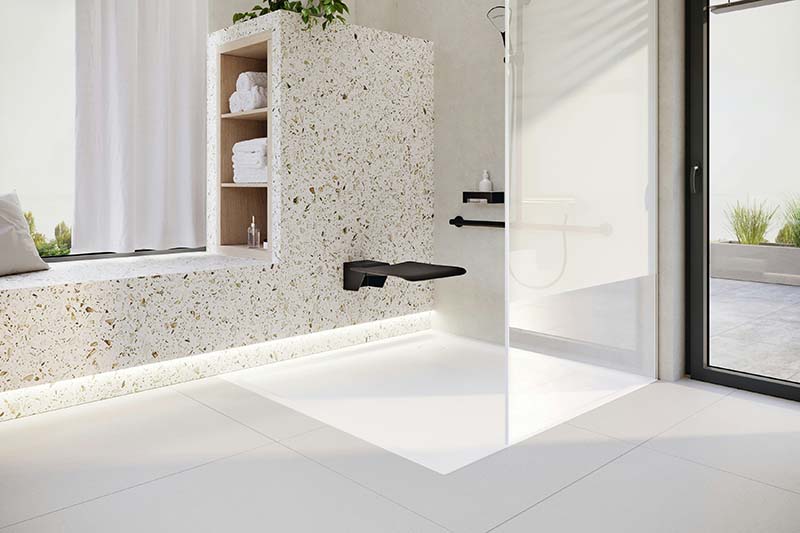
9. Create break areas – for rest in between
Something that didn’t play a role in the past often becomes important with increasing age: short periods of rest in everyday life. Anyone who moves around the house or garden with a walking frame or slower steps should have the opportunity to rest in between.
Whether it’s an armchair in the hallway, a bench in the entrance hall, a stool in the kitchen or a cozy spot by the window – small seating areas are quick to set up, look homely and provide valuable services in everyday life.
A weatherproof resting place can also make it easier to get around outside – for example on the way to the garage or the garbage can.
Tip: Make sure that seating is stable, easy to reach and equipped with armrests – this makes it much easier to stand up.
Smart planning today means carefree living tomorrow
An age-appropriate, rollator-friendly home does not mean doing without – it means comfort and safety for all stages of life. Small measures can make a big difference. And if you pay attention to good planning today, you are making provisions – for a life with fewer restrictions, more independence and above all: more enjoyment of living.
Because the home should adapt to life – not the other way around.
Author: Anja Herberth
Chefredakteurin

